Blackberry - planting seedlings and plant care

Blackberries are quite common in Europe and America; their berries have been eaten since ancient times. Blackberries have been grown as a garden crop since the end of the 19th century. Garden varieties are especially popular in Germany, the Baltic countries, England and the USA.
Content:
- Why is culture attractive?
- how to choose planting material and prepare the soil,
- basic rules of care.
Blackberries have a very pleasant aroma and taste; their juice is rich in vitamin and mineral components and quenches thirst well. The berries contain a large amount of vitamins of groups PP, B, C, carotene, and pectin substances. This allows the berry to be used not only as an ingredient in culinary products, it is a valuable product that is used for the prevention and treatment of many diseases.
Benefits of culture
Although experts say that growing blackberries is not a difficult task, in fact it will require extensive knowledge of planting, caring for and propagating the crop. From my own experience I can say that the plant is quite “picky” about where it grows. With the best intentions, the purchased seedling was planted in a sunny place protected from the wind. Even with good feeding and watering, the bush grew poorly and slowly for the first two years, did not bloom or bear fruit. Only in the third year did the plant begin to actively move into the shadow falling from the dogwood growing nearby (whoever has seen this tree knows that the shadow from it is sparse, the tree is translucent).It was during the third summer that long branches appeared on the bush, which overwintered very successfully, giving excellent flowering and a luxurious harvest of large, shiny and fragrant berries at the beginning of summer.
In the middle zone of European countries, the plant feels quite comfortable. It looks very attractive, its leaves and flowers are beautiful, the branches bending over from the bountiful harvest look picturesque. Blackberries should be planted near fences or fences, otherwise you will have to build supports for them. The culture easily tolerates winter cold and does not suffer much from spring frosts. Bushes should not be planted deeply, in a well-lit place. Blackberries need good watering, but wetlands should not be designated for planting.
Gardeners are often interested in the question of how many bushes should be planted in order to provide their family with this tasty source of vitamins. Of course, you should analyze your needs and preferences regarding yield - you can count on getting up to 10 kg of berries from one bush, of course, subject to following all useful care tips. The most popular varieties among gardeners: Agawam, Wilson Earley, Thornfree, all of them are of American origin.
Selecting planting material and preparing to plant blackberries
Blackberry seedlings are selected according to exactly the same criteria as raspberry seedlings. It’s okay if the plant’s stems are not straight, but somewhat curved. Before planting, carefully dig up the soil and remove weeds from it. The optimal time for planting is early spring. Seedlings planted in autumn often die due to frost.When planting winter-hardy varieties in the fall, the soil should be well covered with peat or humus, preferably its layer reaching fifteen to twenty centimeters.
The hole for planting should be made large, at least 40 cm in diameter, and the depth should be approximately the same. When planting, it is advisable to add superphosphate - up to 150 g, potassium sulfate - 40-59 g, compost - about half a bucket. All this is mixed well with the soil. A seedling is placed in a hole, soil is poured onto the roots and it is lightly compacted. The soil level should not exceed the height of the plant’s root collar. Then it is well watered, mulched and cut at a height of 25-27 cm.
Plant care rules
- The soil around the bush should be loosened, cleared of weeds, watered in a timely manner, and fertilizers added to it.
- Watering is carried out during shoot growth and berry formation. Dry, warm autumn requires winter watering.
- It is not necessary to fertilize the plant, provided that all fertilizers recommended during planting are applied, in the first years of its life. In subsequent years, fertilization should be mandatory. It is recommended to annually enrich the soil with 5 kg of humus, 100 g of superphosphate, 30 g of potassium fertilizers. You can also use an infusion of water on bird droppings.
- Mulching the soil will help retain moisture and slow down the growth of weeds near the bush.
- In the fall, all fruit-bearing stems should be cut off; in the spring, the frostbitten upper parts of the shoots should be removed.
- Blackberries are more resistant to diseases and pests than raspberries, but in principle they can also suffer from them.
- It is propagated by root suckers.

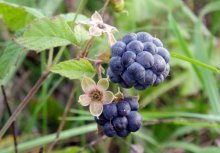
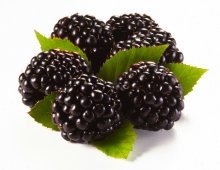

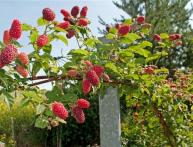

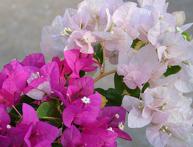
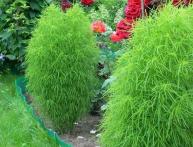
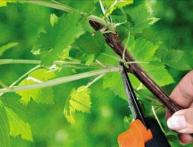
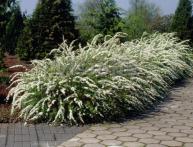
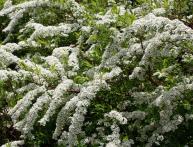
Comments
Blackberries are a delicious berry, but it turns out that if you buy this delicacy at the market or in a store, you need to wash it before eating. Tested for yourself! I don’t know what about the same if she grew up in her own garden.
We have been growing blackberries for several years. We eat it unwashed from our garden, to be honest, it tastes much better this way :) I am sure that there will be no harm from it. Of course, one cannot say that the berries purchased on the market are clean - no one knows in what conditions the plant grows and how the collected berries are stored before sale.
We recommend a special machine for planting blackberry seedlings
Her description, photos and videos are here: